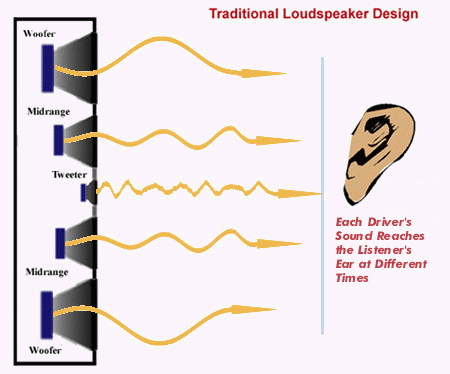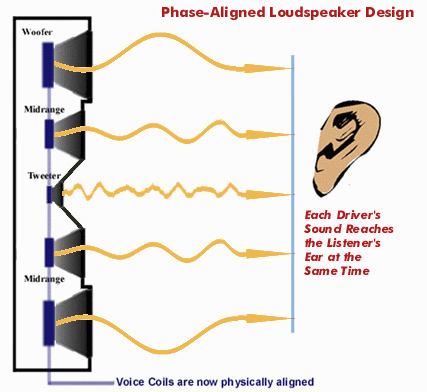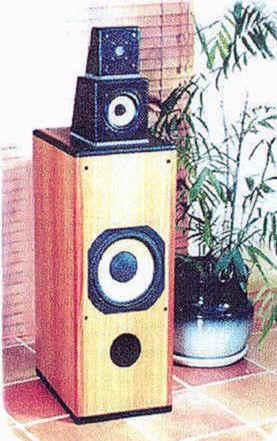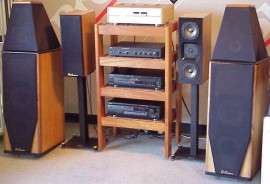 |
Acoustic Speaker Driver Offset of
|
 |
 |
Acoustic Speaker Driver Offset of
|
 |
|
| |
| Artisan
Loudspeakers is among the very select few loudspeaker companies to
develop and engineer loudspeakers with a particular design known as Acoustic
driver offset. This is a very expensive process, and only the most
technically advanced and research oriented companies practice this acoustic
technique. The result is sound reproduction that is superior to
non-physically phase-aligned designs. By allowing all frequencies to
reach the listener at the same time, sound waves to not cancel each other
and the listener's ability to locate the speaker becomes virtually
impossible. Thus, imaging and realism are unequalled. The front driver baffle of an acoustic driver offset enclosure often requires thicknesses in excess of four inches. Furthermore, the machining processes require multi-hundred thousand dollar computer controlled routing machines. The engineering and construction time and cost to create physically phase-aligned front driver baffles often exceeds that of the entire remaining enclosure. Understanding the expensive manufacturing costs to produce perfect physical phase-aligned enclosures, offers this process in its most elite loudspeaker designs Artisan R501 Below . | |
 | This is a traditional loudspeaker design that over 99% of current speaker manufacturers use in their products. All of the drivers are mounted flush on the face of the speaker. The problem with this design is that sounds from the tweeter simply arrive at the listener before sounds from the midrange. Then, sounds from the midrange drivers arrive at the listener before sounds from the woofers. This is due to the fact that when all of the drivers are placed flush on the face of the speaker, the voice coils are not on the same plane. In fact, the woofer voice coil is usually 3 to 4 inches behind that of the tweeter voice coil. |
| Thus, sounds from the woofer arrive at the listener after the sounds from the tweeter . Though this does not seem to be much of a delay, the actual negative effects to overall sound performance are staggering. In this scenario, certain sound waves begin to damage each other as they travel to the listener having begun their journey from a different starting point. And, even non-audiophiles have the ability to detect the location of a speaker that emits sounds from different starting points. Thus, to achieve perfect acoustic imaging and clarity, physical phase-alignment is mandatory. Is Frequency response group delay differential group delay and phase response in loudspeakers related to one another ? see Loudspeaker Group Delay | |
 | In a physically phase-aligned loudspeaker design, the tweeter is recessed into the speaker so that its voice coil becomes aligned with the voice coils of the midrange and woofer. Then, the midrange is recessed into the speaker so that its voice coil becomes aligned with the woofer and tweeter. The result is perfect acoustic realism and unequalled imaging. Voices literally sound as if they were right in front of you. You will find yourself reaching to touch the singer as you hear whispers and breathing that provide new life to your recordings. You will not be able to locate the speakers with your ears, thus realistic imaging becomes possible. Artisan physically phase-aligned speakers place you one-on-one with the musicians. |
| Home theater presentations become so real, you feel as though you've been transplanted into the screen. | |
|
STONES SOUND STUDIO prides itself on creating the most accurate sound in the loudspeaker industry. When you purchase Artisan speakers, you are assured that everything from design, acoustics, and appearance are the best in the industry.
Pictured to the right is the Artisan R501 Showing the driver of sets The Artisan R501 HD speaker |
 | |
 |